How to tune up a snowblower video
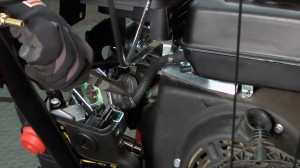

Get your snowblower ready for winter by giving it a tune-up. We show you how to do everything from replacing the fuel filter and spark plug to changing the oil and gas, checking the snowblower tires, lubricating key parts such as the auger shaft and auger control cable, greasing the axle, checking the skid shoes and adjusting the drive control.
Check out our DIY snowblower repair guides for step-by-step instructions for many snowblower repairs.
Tools, parts and supplies needed
Fuel stabilizer
Fresh fuel
Fuel filter
Fuel line
Spark plug
Sno-Jet snowblower spray
Silicone lubricant
Socket wrench
Multi-purpose automotive grease
Air pressure gauge
Shop rag
Drain old fuel from the snowblower
Hi, my name is Wayne from Sears PartsDirect. Today, we're going to talk about getting your snowblower ready for that first big snowstorm of the year—you know it’s coming.
Before you start, park your snowblower on a level surface, remove the key and disconnect the spark plug wire. If you’ve got any fuel left in the tank from last year, drain it. Use extreme care when handling gasoline. Work in a well-ventilated area free of open flames or sparks. Fresh, clean fuel is a must. Old gas absorbs moisture when it sits for a long time in the fuel tank or your gas can. Unless you’ve used a fuel stabilizer, gas will go bad in about 6 months.
Replace the fuel filter
Dirty gas can clog the fuel filter in your tank, so you’ll also want to take a look and replace it if it’s old or clogged. Most owner’s manuals recommend changing the fuel filter at the start of every season. Here’s a video that will show you how to change your fuel filter.
Inspect the fuel line for cracks
While you're in there, take a look at the fuel line and make sure there are no cracks and that it's still flexible and soft. Replace the fuel line if it's cracked or broken. Here's a video showing you how.
Replace the spark plug
Spark plugs should also be replaced once per season. So, if you know your spark plug is from last year, you’ll probably want to replace it. Here’s a video to show you how to replace and set the gap on a spark plug.
Change the oil
Now, let’s talk about oil. Oil lubricates the engine parts and helps cool the cylinder. Oil is another thing you’re gonna want to change once per season. This video will walk you through changing the oil on a snowblower. Don't forget to take that old oil to your local oil recycling station.
Lubricate the auger shaft
Next, we’ll lubricate the auger shaft and bearings to keep that auger from seizing up in the dead of winter. Remove all the shear pins on the auger shaft. Spray a light coating of silicone lubricant inside the shaft and around the spacers and flange bearings. Inspect the shear pins for wear or damage and replace them if necessary. Reinstall the shear pins and secure them with the cotter pins.
Grease the axle and check the tire air pressure
Next, let’s check out your wheels and tires. Carefully tilt the snowblower on its nose. Make sure your fuel tank is empty. Use a socket wrench to remove the first wheel. Clean and coat the axle with multi-purpose automotive grease to keep it from rusting up. Reinstall the wheel and secure it back on the axle. Repeat the process on the other wheel.
Now, we’ll use a pressure gauge to check the air pressure in each tire. Press the gauge down on the valve stem to check the pressure and compare it to the recommended psi found on the tire sidewall. Inflate or deflate the tires as necessary.
Adjust the skid shoes if needed
You’re also going to want to check out both your skid shoes. The skid shoes protect the shave plate from damage. The entire bottom surface of the skid shoe should be touching the ground. If it’s not, you’ll need to adjust it. This video will show you how. If your skid shoe is worn down to the point that the shave plate hits the pavement, either flip it over, or replace it. Here’s another video with more details.
Lubricate the auger and drive controls
Next, you’ll want to clean off any dust and dirt from the auger control and drive control pivots. Spray both of those pivots with lubricant. Then, you’ll need to do the same to the auger cable bracket at the bottom of the snowblower.
You’ll also want to lubricate the drive hex shaft. This video will walk you through that process.
Fill with fresh gas, adjust the auger and drive controls
Now that you’ve got this puppy all oiled, greased and all put back together, it’s time to fill it up with fresh clean gas and make sure it’s working. Take your snowblower outside and test out both handles under normal operation. If either handle doesn’t work, you’ll need to adjust the cable. If the augers spin with the auger control disengaged, follow the steps in this video to adjust it.
If the snowblower creeps forward with the drive handle disengaged, watch this video to learn how to adjust the drive control. One last tip before we go. If you want to keep your snow moving freely though the chute, you can spray the chute and auger housing with Teflon snow repellent.
Hey, thanks for watching. Check out the other videos here on the Sears PartsDirect YouTube Channel, and subscribe to learn about new videos.
Symptoms for gas snowblowers
Choose a symptom to see related snowblower repairs.
Main causes: punctured tire, damaged rim…
Main causes: dirty carburetor, stale fuel…
Main causes: dirty carburetor, clogged fuel filter, dirty spark plug, incorrect valve lash, leaky engine gaskets…
Main causes: stale gas, clogged carburetor, clogged or broken fuel line, dirty spark plug, bad rewind starter, incorrect…
Main causes: snow build-up in chute, chute drive mechanism failure, bad chute control assembly…
Main causes: loose drive clutch cable, damaged drive clutch cable, worn friction disc, scraper blade scraping the ground…
Main causes: clogged chute, damaged auger blades, broken shear pins, worn auger belt, damaged gear case, engine problems…
Main causes: broken shear pins, worn or loose auger drive belt, auger drive cable failure, damaged auger, bad gear case…
Things to do: replace the spark plug, change the oil, rebuild the carburetor, adjust valve lash, adjust or replace the b…
Repair guides for gas snowblowers
These step-by-step repair guides will help you safely fix what’s broken on your snowblower.

How to replace a snowblower fuel filter
Replace the fuel filter on your snowblower if it's clogged or damaged.…
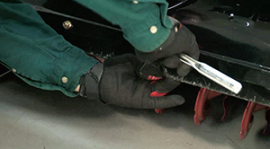
How to replace a snowblower shave plate
Follow the 7 easy steps in this repair guide/video to replace a worn out shave plate on your snowblower.…
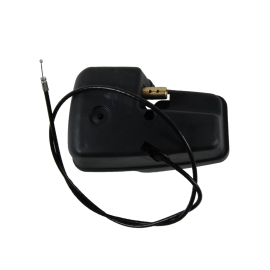
How to replace a snowblower chute control gearbox assembly
Replace the chute control gearbox on your snowblower if it's stripped or damaged.…
Articles and videos for gas snowblowers
Use the advice and tips in these articles and videos to get the most out of your snowblower.
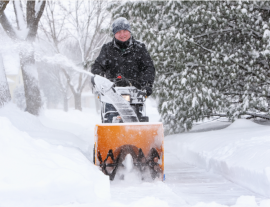
Learn the steps to take to adjust and maintain your snowblower so it lasts longer.…
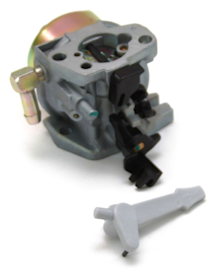
This chart will help you find the right carburetor for your Craftsman snowblower, tiller or log splitter.…
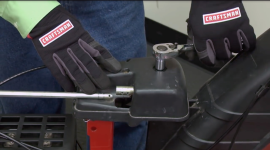
Learn how to replace the chute control assembly and gearbox if the chute on your snowblower won't turn.…